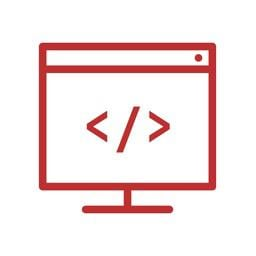Understanding PHP Dependency Management with Composer: A Beginner’s Guide to Managing Libraries and Packages
A Comprehensive Guide to PHP Development: Best Practices, Tools, and Techniques for Building Modern Web Applications:
Introduction
PHP is one of the most popular scripting languages for web development, powering dynamic websites and applications worldwide. Whether you are a beginner or an experienced developer, mastering PHP requires an understanding of best practices, tools, and techniques to build modern and efficient web applications. This guide covers essential PHP development concepts and offers valuable tips to improve your workflow.
1. Best Practices for PHP Development
To build clean, maintainable, and efficient PHP applications, developers should follow certain best practices:
a) Use Object-Oriented Programming (OOP)
Object-oriented programming allows for code reusability, better organization, and easier maintenance. With PHP's support for OOP, you can create classes and objects that represent entities and their behaviors.
b) Follow Coding Standards
Adopting a consistent coding standard helps ensure that your code is readable and maintainable. The PHP-FIG (Framework Interoperability Group) has created standards like PSR-1 and PSR-2, which define guidelines for code style and structure.
c) Error Handling and Logging
Proper error handling is crucial for debugging and ensuring stability in production. Use try-catch blocks for exceptions and implement logging mechanisms with libraries like Monolog.
d) Secure Your Code
PHP applications are often targets for attacks. Implement measures like input validation, data sanitization, and secure authentication (e.g., bcrypt password hashing) to protect your app from vulnerabilities like SQL injection and cross-site scripting (XSS).
2. Tools for PHP Development
A range of tools can make your PHP development process smoother and more efficient. Here are some must-have tools:
a) Composer
Composer is a dependency manager for PHP. It simplifies managing libraries, dependencies, and autoloading. Use Composer to install packages and ensure your project’s libraries are up to date.
b) PHPUnit
PHPUnit is a testing framework for PHP. It helps ensure your code works as expected by writing unit tests. Implementing test-driven development (TDD) with PHPUnit improves the reliability of your code.
c) Xdebug
Xdebug is a powerful debugging tool for PHP. It allows step-by-step debugging, stack traces, and profiling to help identify issues in your code. It integrates well with IDEs like PhpStorm and Visual Studio Code.
d) IDE (Integrated Development Environment)
A good IDE can improve productivity. PhpStorm is a popular PHP IDE that offers syntax highlighting, code completion, debugging, and integration with version control systems like Git.
3. Techniques for Building Modern Web Applications
Building modern PHP applications requires familiarity with several techniques that enhance performance and scalability.
a) Use Frameworks
PHP frameworks like Laravel, Symfony, and CodeIgniter provide pre-built functionality that speeds up development. These frameworks follow best practices, including MVC (Model-View-Controller) architecture, and come with built-in tools for routing, security, and database management.
b) RESTful APIs
Many modern web applications require the ability to communicate with other services. Building RESTful APIs with PHP allows your application to handle HTTP requests and return data in formats like JSON or XML. Frameworks like Laravel make it easy to create APIs with authentication and validation.
c) Database Optimization
Efficient database management is essential for performance. Use prepared statements to prevent SQL injection, index frequently accessed columns, and optimize queries to handle large datasets.
d) Caching
Caching helps reduce database queries and improve performance. Use tools like Redis or Memcached to cache data, session states, and API responses for faster access.
4. Deploying and Maintaining PHP Applications
Once your application is developed, deploying it to a live server is crucial. Some tips for deployment include:
-
Version Control: Use Git to track code changes and collaborate with your team.
-
Continuous Integration/Continuous Deployment (CI/CD): Automate your deployment process to ensure smooth updates and minimize downtime.
-
Monitor Performance: Use monitoring tools like New Relic or Datadog to track server performance and identify bottlenecks.
-
Backup: Regularly back up your application’s database and files to prevent data loss.
Conclusion
PHP development is an ongoing learning process that requires developers to stay up to date with best practices, tools, and new technologies. By following best practices, leveraging the right tools, and applying modern techniques like OOP, frameworks, and API development, you can build powerful, scalable, and secure web applications.
Easyupload - Optimizing User Experience Through Web Design How to Create a Seamless and Engaging Digital Journey
4shared - Optimizing User Experience Through Web Design How to Create a Seamless and Engaging Digital Journey
Depositfiles - Optimizing User Experience Through Web Design How to Create a Seamless and Engaging Digital Journey
Files.fm - Optimizing User Experience Through Web Design How to Create a Seamless and Engaging Digital Journey
Uploadnow - Optimizing User Experience Through Web Design How to Create a Seamless and Engaging Digital Journey
Mediafire - Optimizing User Experience Through Web Design How to Create a Seamless and Engaging Digital Journey
Btafile - Optimizing User Experience Through Web Design How to Create a Seamless and Engaging Digital Journey
Dz4up - Optimizing User Experience Through Web Design How to Create a Seamless and Engaging Digital Journey
Dosya - Optimizing User Experience Through Web Design How to Create a Seamless and Engaging Digital Journey
Filefactory - Optimizing User Experience Through Web Design How to Create a Seamless and Engaging Digital Journey
Scribd - Optimizing User Experience Through Web Design How to Create a Seamless and Engaging Digital Journey
Slideserve - Optimizing User Experience Through Web Design How to Create a Seamless and Engaging Digital Journey
Docs Google - Optimizing User Experience Through Web Design How to Create a Seamless and Engaging Digital Journey




Comments
Post a Comment